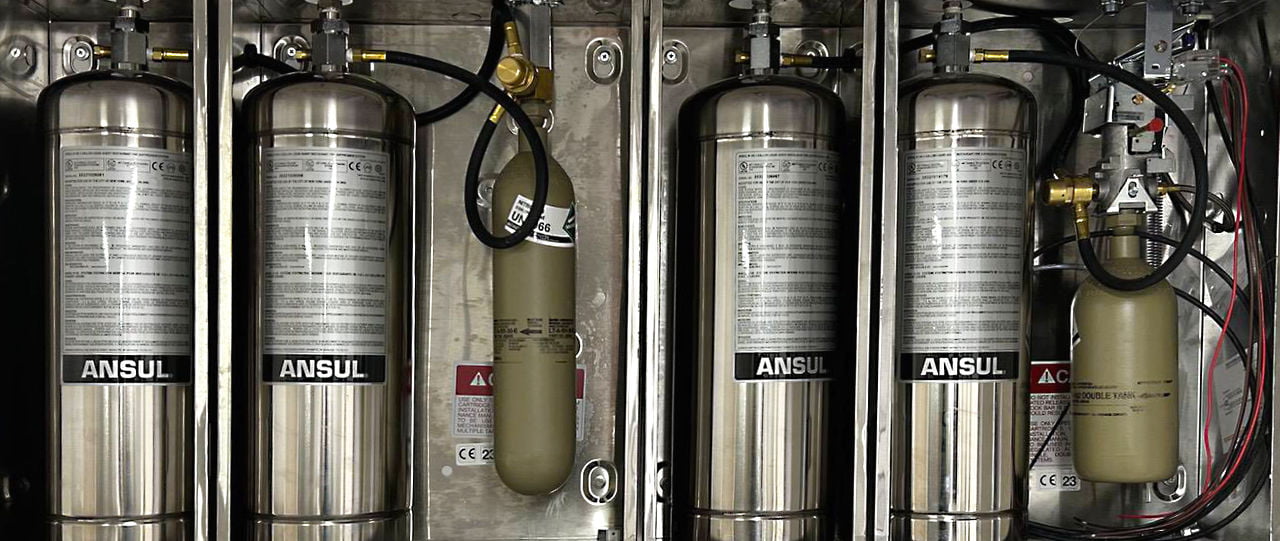Fire Suppression System Installation
We view installation as a process beginning long before engineers make holes and thread pipe. We pride ourselves on providing the most complete end-to-end experience possible.

Design Stage
The initial design stage differs slightly depending on whether the installation is a retro-fit to an existing kitchen or proposed to protect a new build or refurbishment where the information comes from engineering drawings. Where a kitchen pre-exists, a site visit and survey is usually undertaken.
In either scenario, we first develop a specification which is primarily driven by the number, size and type of appliances (termed hazards). We also take into account the likely system location, overall demand on the system, overall installation size and cost of ownership over the life of the system. These considerations, along with the desired type of coverage (appliance specific or overlapping) will usually give rise to a clear preferred manufacturer choice and configuration.
Fire Detection
All of the systems we install have an automatic method of fire detection whether it be mechanical via fusible links, pneumatic via a pressurised heat sensitive choob or electronic via heat sensitive linear cable. Whichever the method of detection employed, the aim is to detect a full-flame fire within and trigger the system to discharge fire suppression fluid via a nozzle network. We are often asked nervously if a system will discharge when, say, a chef is flambéing enthusiastically. The answer is an emphatic 'No!'. A system will only discharge when it detects the heat associated with a sustained full-flame fire.
One or more remote pull-stations are placed on the path of egress so that a system can be activated by a kitchen staff member if they feel that a fire will develop out of control without waiting for it to develop sufficient heat to trigger the system automatically.
Once the system type is agreed we arrange installation. Small to medium systems installation can usually be completed in a single visit. Larger, more complex installations take longer with building site installations often being carried out as a first and second fix.

Fire Suppression System Commissioning
Similarly, it is usual for us to commission a system at the time of installation when it stands alone. If the installation is a group of systems, perhaps in a complex containing multiple kitchens or on a site where other contractors have yet to complete their work, commissioning commonly takes place at a later date.
Cause and Effect Testing
We are able to support cause and effect testing and have extensive knowledge of the integration output options of a fire suppression system with a BMS or a Fire Alarm Control Panel.
